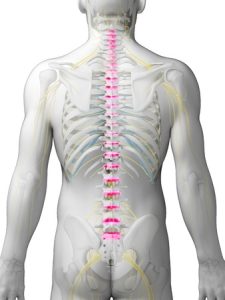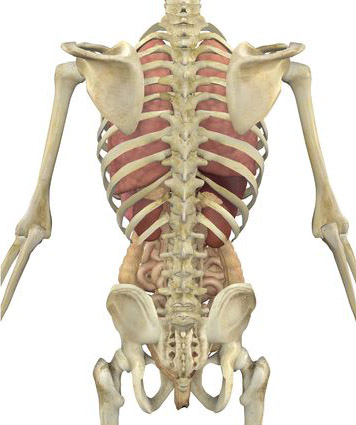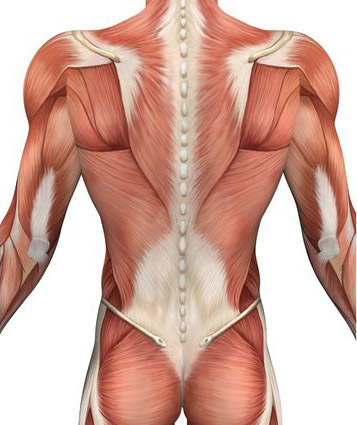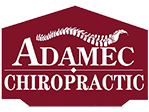Information on Back Pain
Schenectady | Rotterdam | Guilderland
Information on Back Pain
Schenectady | Rotterdam | Guilderland
Understanding The Human Back
 Overview
Overview
The human back is a large, complex structure composed of bone, muscle, tendons, ligaments, nerves, and blood vessels descending from the back of the neck and shoulders to the top of the buttocks. Its intricate anatomy provides support and flexibility for the head and torso; protection for our internal organs; allows movement of the head, torso, arms, and legs; and most important, serves as the home for the spinal column.
The upper back, consisting the thorasic section of the spine provides the most support, with the ribs attached firmly to each level of the thoracic spine. The lower back, the lumbar section of the spinal column, allows for flexibility and movement in back bending (extension) and forward bending (flexion). It does not permit twisting.
 Skeletal Structure of the Back
Skeletal Structure of the Back
The central skeletal structure of the human back is the vertebral column. This consists of the both the thoracic and lumbar section of the vertebral column which spans from just below the neck to the top of the buttocks. Aside from supporting the head, neck, and torso, the vertebral column also houses and protects the spinal cord – the body’s central information pathway between the brain and body’s peripheral nervous system.
The vertebral column also supports the ribcage, which extends from the top of the thoracic spine, wrapping around each side of the upper torso connecting at the sternum (the center of the chest) The ribcage descends more than halfway down the length of the back, and provides vital protection for several critical organs including the heart and lungs.
 Muscles of the Back
Muscles of the Back
The back contains a large and complex group of muscles that work together to support the spine, hold the body upright, and allow body’s torso to move, bend, and twist in several directions. The muscles in the back fall into three categories:
Extensor Muscles: Attached to the posterior section of the spine, these muscles enable standing and lifting objects.
Flexor Muscles: Attached to the anterior section of the spine (including the abdominal muscles), Flexor muscles enable flexing, bending forward, lifting, and arching the lower back.
Oblique Muscles: Attached to each side of the spine, Oblique Muscles help rotate the spine and maintain proper posture.
Real Reviews from Real People!




















































